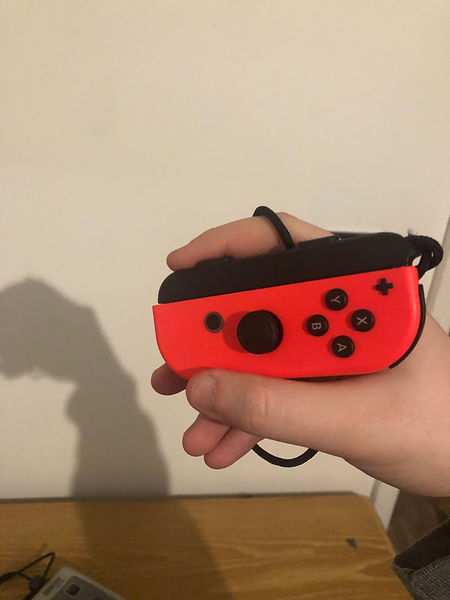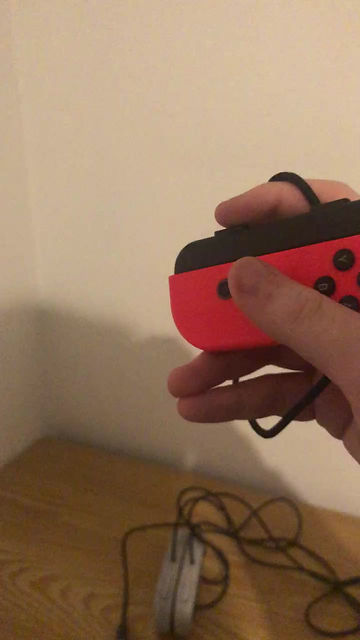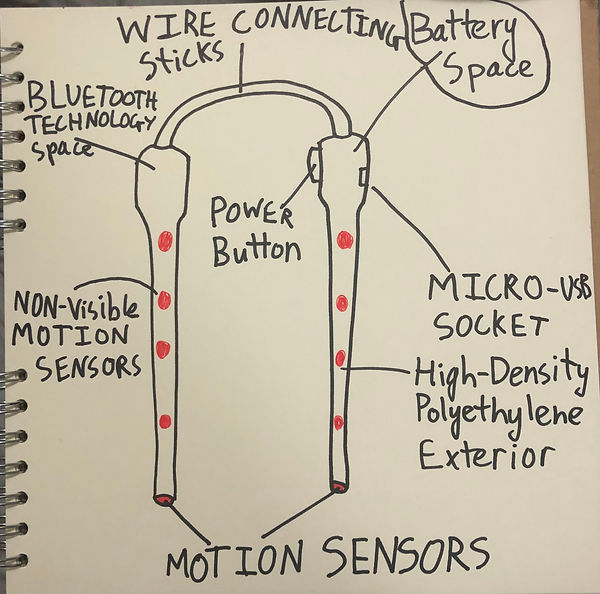Chopsticks: Controllers
As a team, we agreed to look into multiple controllers we could use and layouts in which to use them.
On the day I joined the team, we discussed potential controllers and I decided to do a quick sketch of what the controls might be if one were using mouse & keyboard.
Text in square brackets [] was added on the website, the rest is part of the original image.

[Control] Left Hand
[Control] Right Hand
Q
E
W
A
S
D
Movement
IF we
have time
[Control] Left Chopstick
[Control] Right Chopstick
Move hand forward/backwards
[When scrolling]
Tightness holding down [with chopstick]
(When [holding] right/left clicking [and scrolling])
Q/E can be rebound to side buttons, aiding accessibility
I tried to make it so that in the case we have no movement option, all keys can be mapped to the mouse in the interest of accessibility for those who only have one fully functional hand.
One problem with this design that became apparent through playtesting was that there is no control to rotate the wrist. This would be an issue because when using chopsticks ourselves to perform tasks, we often rotated our wrists to achieve them.
Nintendo Switch Joycons
Due to their small size and motion sensors, I had a look at the Nintendo Switch joycons and practiced holding them as closely to chopsticks as I could.



Whilst the pictures on the left decently show how the joycons might be held idly during gameplay, the video on the left attempts to show how it might look trying to use them, imagining that the joystick is being used to look around, and the trigger my finger presses is held down to apply pressure with my right pair of chopsticks in-game.
There are already examples of games that have successfully used the joycons for motion controls, such as Nintendo Switch Sports, Just Dance 2022, and Surgeon Simulator CPR. By having these examples it becomes quite clear that it is possible both software and hardware-wise to use the joycon controllers to emulate holding chopsticks with motion control, whilst having the additional upside that such can be done without a custom controller.
However, in all ways but 'held between the thumb and index finger', it doesn't feel the same as holding chopsticks, and even if it is possible: none of the members of our team have experience developing anything for the Nintendo Switch, and having our first attempt utilise the joy-con's motion controls would be a significant challenge.
Custom 'Chopstick' Controller
We have also considered having a custom controller for our game, so that users can learn how to hold chopsticks through it with an accurate-feeling custom controller. I did sketch a rough design for what the custom controller might look like.

I felt that High-Density-Polyethylene (HDPE) would be a suitable material for the exterior for multiple reasons:
-
It is a lightweight yet strong plastic, even used for other games controllers like the PS5's Dual-Sense controllers.
-
It is easily recyclable.
-
It is possible to 3D print with, so we could get prototypes of the exterior made without significant issue, as long as we account for it shrinking whilst it cools.
The micro-USB socket will be connected to a rechargeable battery in the chopsticks, this alongside the inclusion of Bluetooth will make it so the custom controller can be used wirelessly.
I feel it is suitable to have multiple motion sensors so that the exact position and angle of the chopsticks can be communicated to the game.
The wire that connects the pair of chopsticks has the main use of allowing electricity from the battery to power both of them –rather than them requiring separate charging– but it also will make it harder to lose a singular chopstick that is part of the custom controller.
The extra thickness at the end of the chopsticks where they connect is not the most elegant appearance, however it may be necessary to fit all the necessary components, and I do not think it will add too much weight to that end and result in difficulty holding the chopsticks. I do not think much space will be necessary based on the quantity of small modern devices that have their own batteries, bluetooth function, and motion sensors (such as AirPods, as an example of the prior two, and the Nintendo Switch Joycons making space for motion controls on top of its other functions)
The team will need to talk with an engineer to assess the accuracy of my assumptions, and to begin making physical prototypes. In the meantime, I made a very basic 'visual prototype' of how it might look and feel holding the custom controller.

